App Concept
Release
Overview
Release was designed to track the mental health of its users and emotionally regulated their feelings and moods. It serves as a tool to maximize emotional regulation to improve mental health.
Role: Product Designer & UX Researcher
Team: Solo Project
Duration: April 2020 – May 2020
Brief: Design a social app concept for a positive social impact
Understanding the Problem
Through my research, I found that a child’s mental health depends on emotional regulation and healthy communication with their parent(s). Poor communication between a child and parent correlates to a higher chance of a child experiencing anxiety and depression.
Solution
- A product to improve the communication and emotional regulation between a child and parent(s).
- A way for parents to improve communication with their children if they did not know where to begin.
- A place to monitor a child’s mental health.
Sketches
- Select an emotion
- Select reasons for your feelings
- Journal your feelings
- View your profile
- Chat
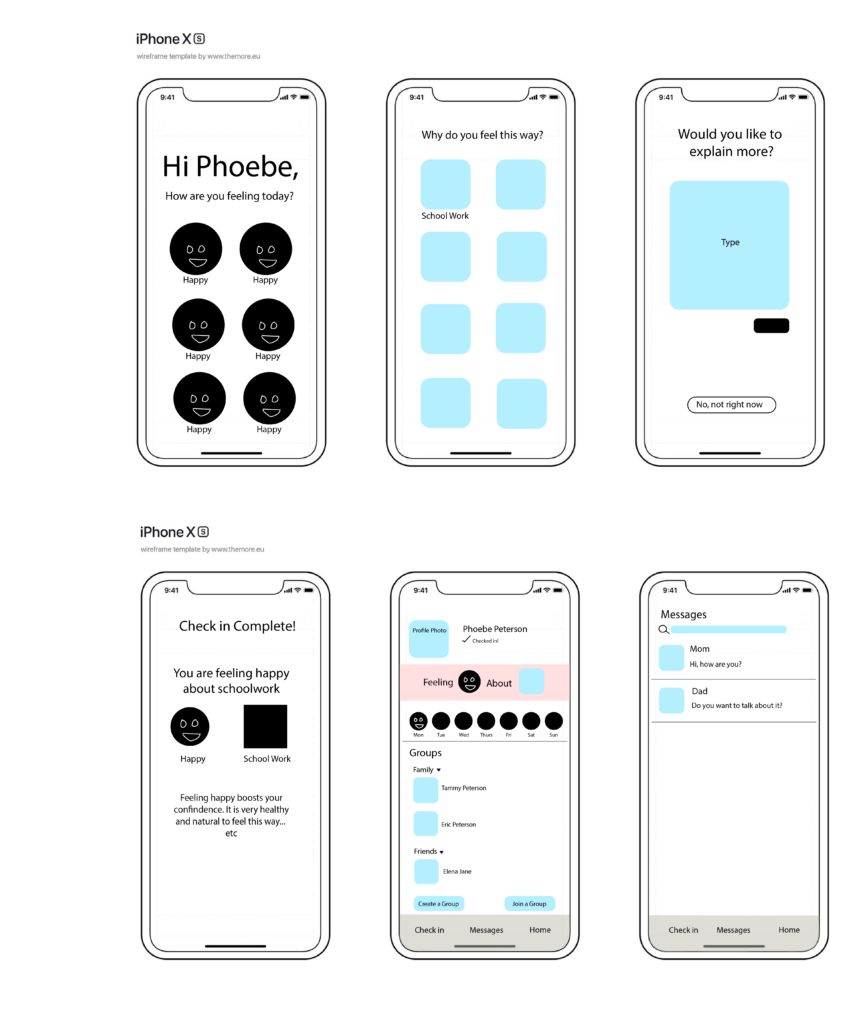
Building the
Structure
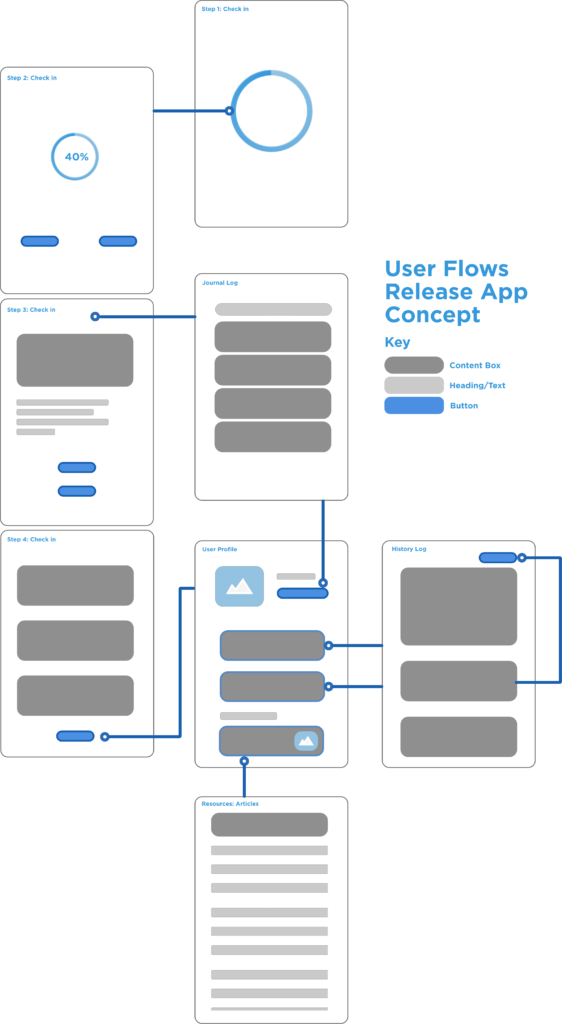
User Interviews
- On scale of 1-10, how easy is it for you to navigate?
- What’s the most interesting aspect of the interface?
- What’s the most frustrating aspect of interface?
- What’s missing in the existing tool?
- How is the overall aesthetic of the tool?
- How many steps do they need to take to complete the task?
- Do they need any assistance/explanation while/for doing the task?
Results
I interviewed four different participants; one was a 10-year female, another 15-year-old male, another 17-year-old female, and a middle-aged mother.
Through user testing, the participants agreed the initial structure of the app should be more interactive. This finding was important because the app is aimed at a younger target audience; therefore, it needs to be very enjoyable and interactive.
The original design was ambiguous to users because of the optional steps. They would have liked that there were fewer steps, but all of them were mandatory, and each step was a button rather than writing in an answer. Users enjoyed the simple color scheme, but the younger users would have liked something more exciting and interactive. The females found the app more valuable than the males.
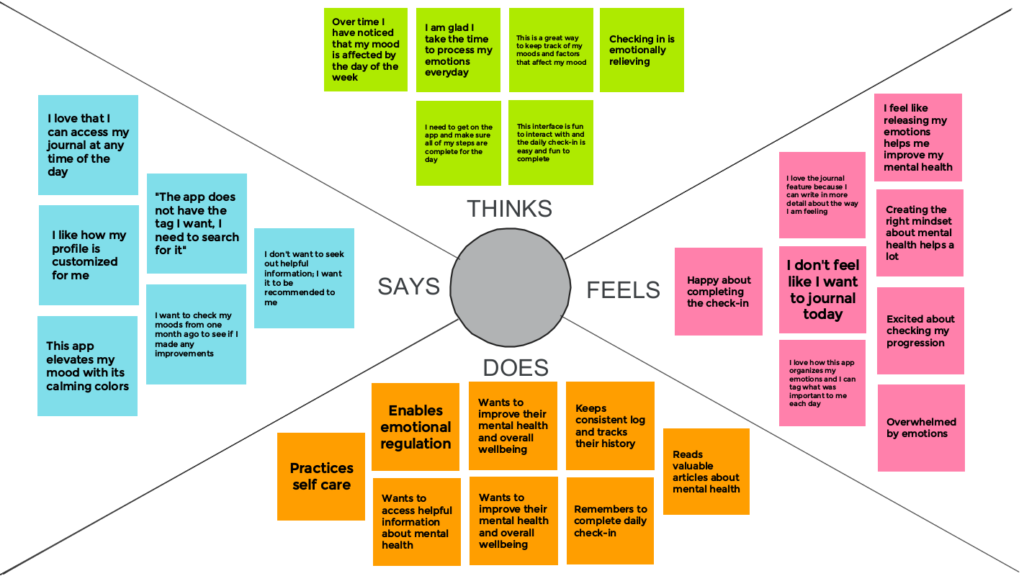
Questions to Consider:
- How will the UI design captivate and excite users? The app should bring excitement to the user. The interface should be interactive and enjoyable, and easy to navigate, considering it is for a younger audience.
- Is the user able to fully express their emotions? The app should allow users to communicate their exact feelings; the app should not constrain the emotional expression of the user.
Empathy Mapping
Based on my user interviews, I created this aggregated empathy map that helped me better understand and visualize the users’ wants and needs from this product. Understanding the wants and conditions of the user guides me in my decision-making for the UX and UI design of this product.
- How will the user experience “relief?” Users are looking for an easier way to express their emotions and improve their communication. The app must impact a user’s “feelings” in a positive way.
- How will the user remember to complete a daily check-in? The app should remind the user with lock/home screen notifications to meet their daily check-in. The app should also remind the admin user when a group member completes a check-in.
Final UI Design
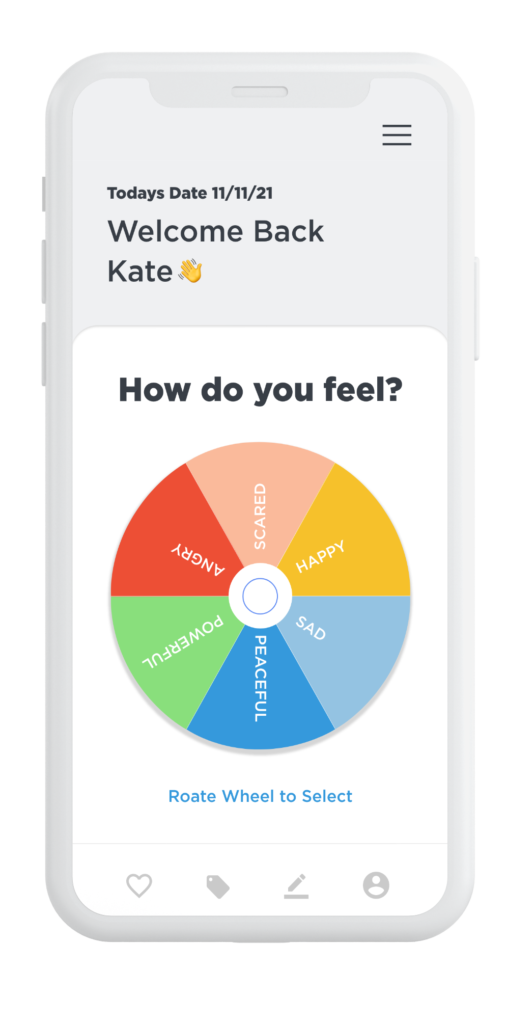
Daily Check-in Step 1
The design purpose of this feature to be fun and interactive. Users can rotate the wheel to select the emotion they are feeling that day. From there, they can tag extra feelings for a better understanding of the emotion they are feeling.
The inspiration for this UI design came from Plutchik’s wheel of emotion.
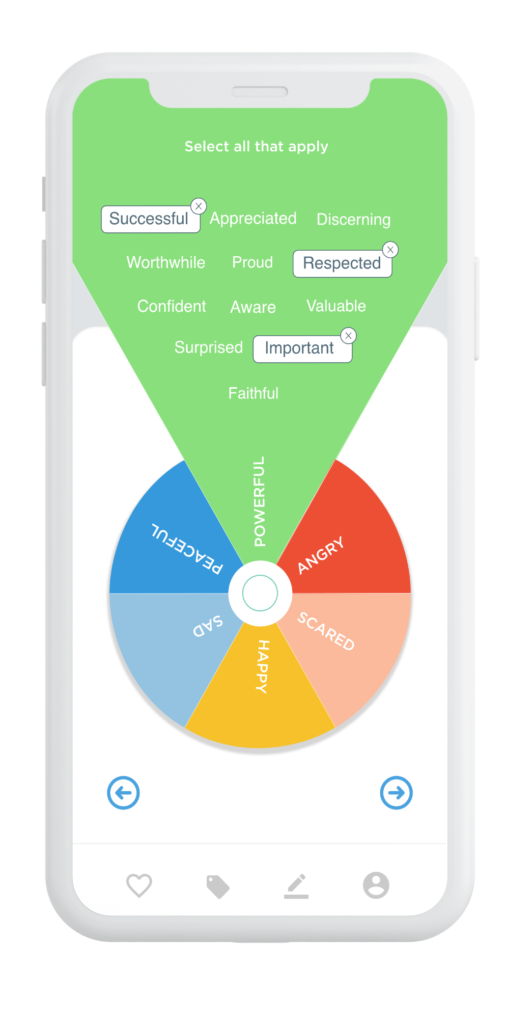
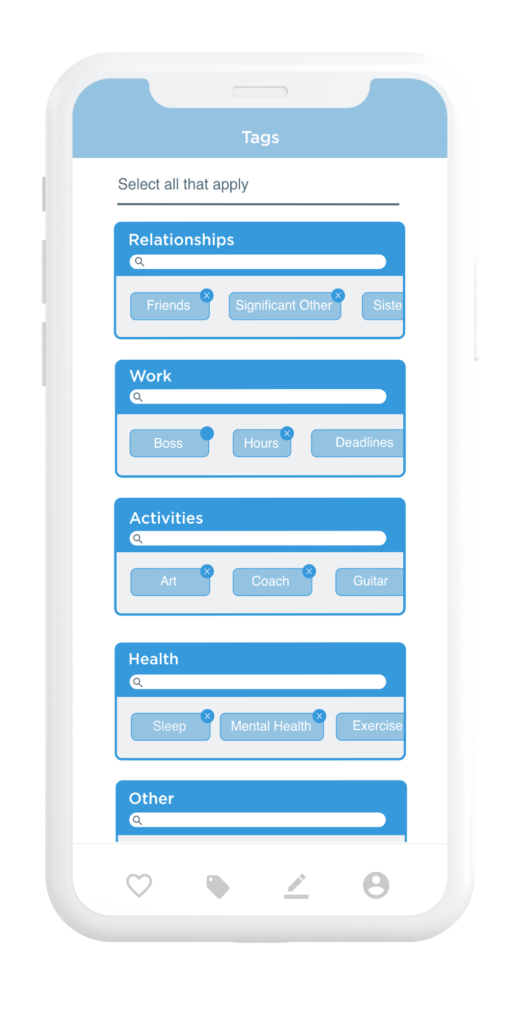
Daily Check-in Step 2 & 3
Step 2 allows you to tag events that happened during your day.
Step 3 is a place for you to privately journal how you feel and schedule a chat with your parent(s).
Adding the step counter helps users understand how far into the daily check-in process they are. The step counter was added based on the feedback from the user interview.
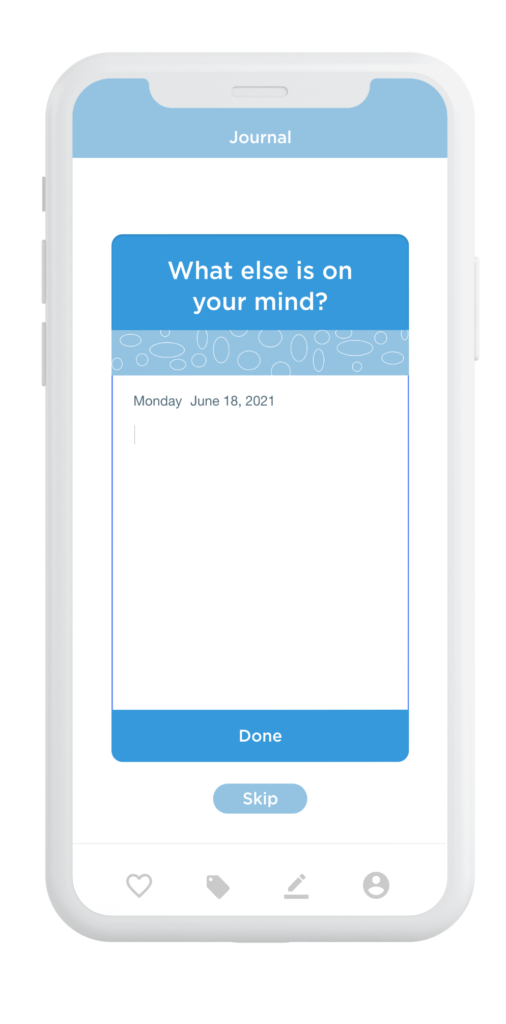
Profile Page
Keep track of your daily status and read recommend articles to help improve your mental health.

Daily Log
Stores your weekly log and displays your updated daily-check in, your mood and tags. View your history in the calendar.
